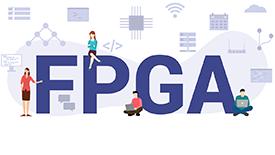Политех21 October - 15 December 2024 г.Starts in 25 days
The FPGAs are extremely powerful to implement computationally demanding algorithms. Gigabits per second broadband signal processing for 5G systems, cryptography, hash generation, radar applications and ASIC prototyping - all the industry areas, where high computational load is present are subjects to apply FPGAs.
In this course you will start from the very basics of digital design and then in parallel (as supposed by the parallel nature of FPGAs) will improve the skills in theory, language (VHDL), IDE features and digital signal processing implementation. The course includes theory and labs on basic combinatorial and sequential logic, examples of various approaches for DSP algorithms implementation, techniques for high speed or low area development, design analysis tools and best coding practices.
In the learning process, you:
Learn the basic theory of digital devices
Learn VHDL language for FPGA programming
Learn how to work with Vivado IDE
Get practical skills for FPGA programming
